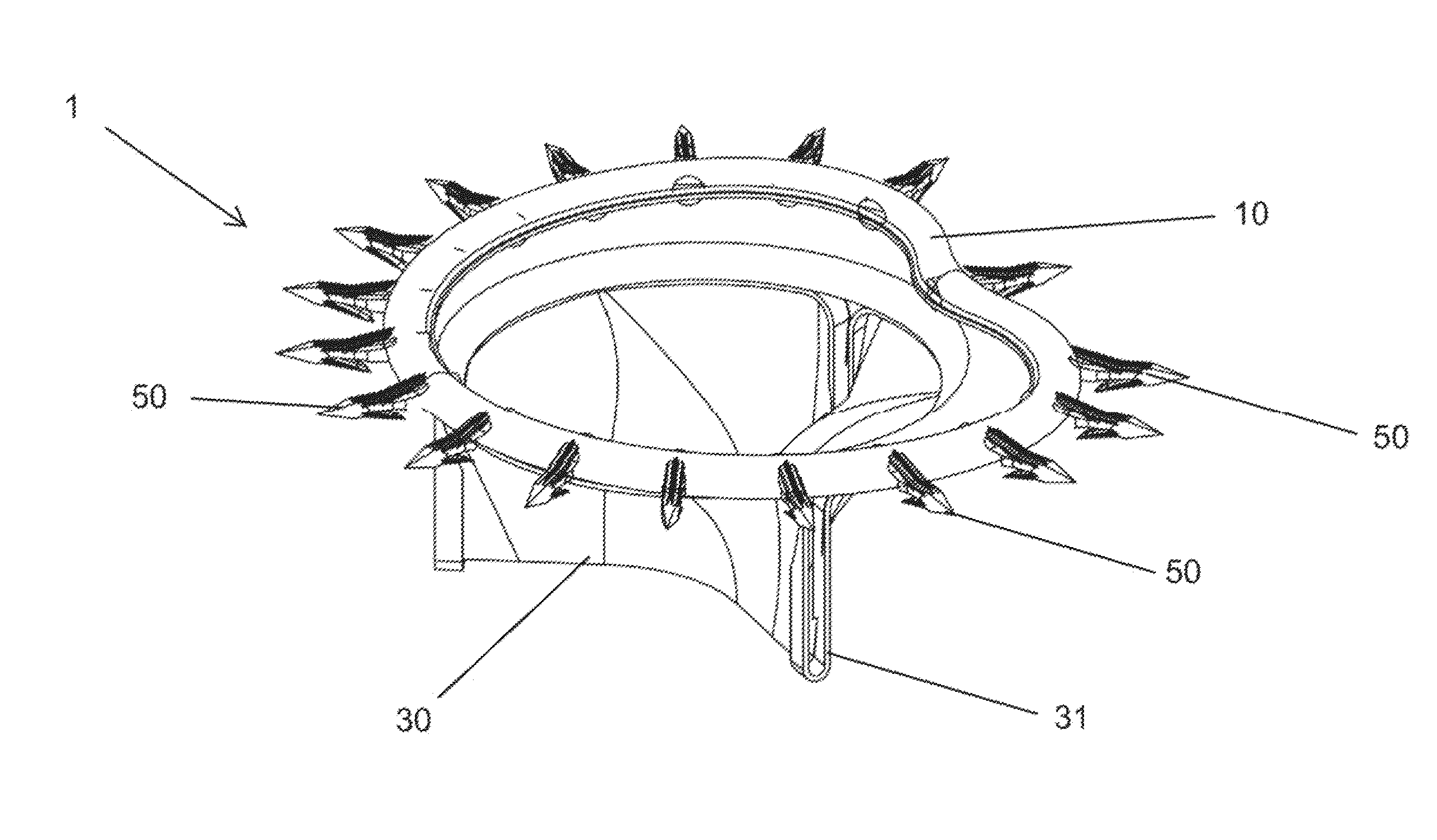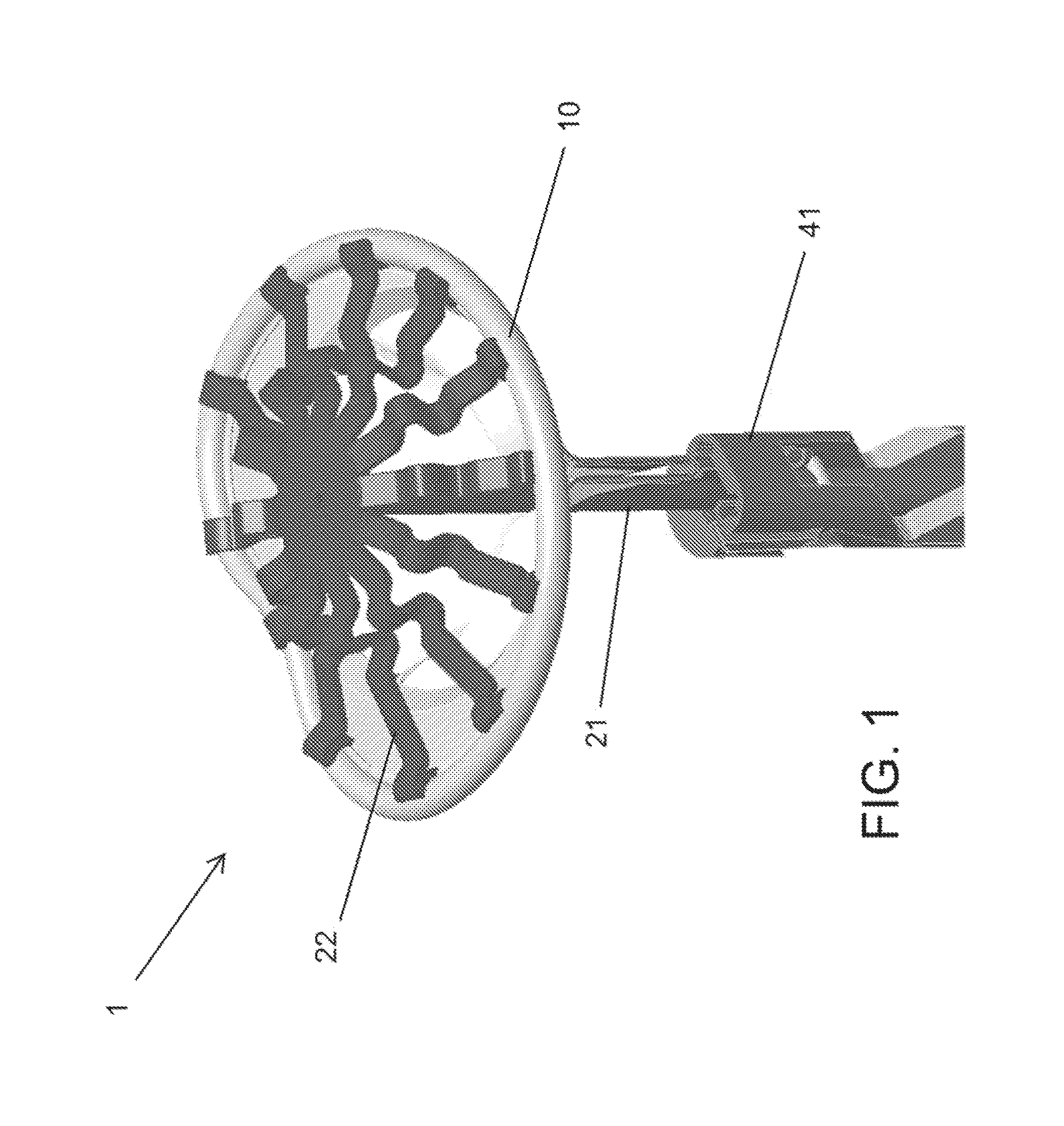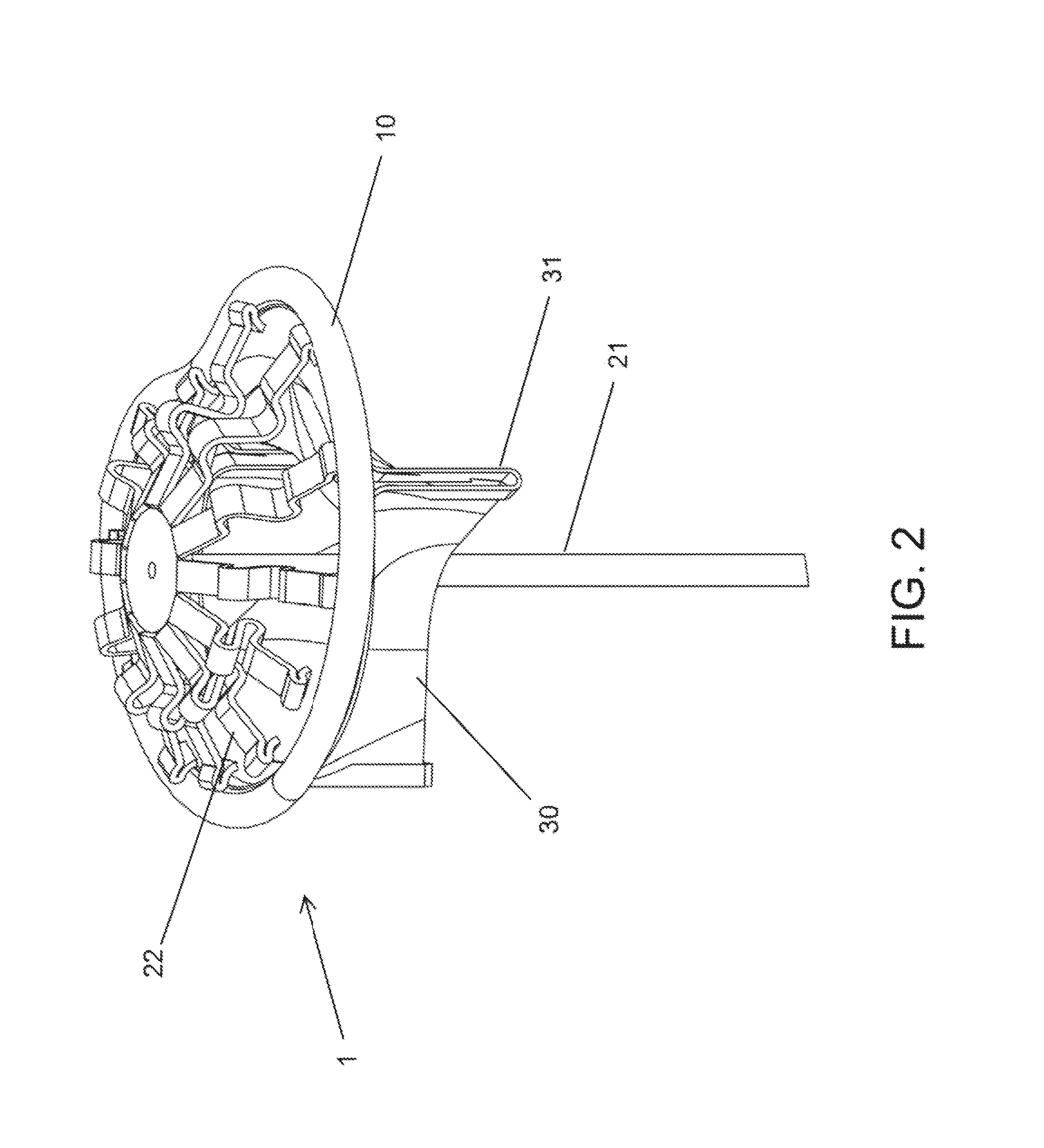Systems and Methods for Affixing A Prosthetic to Tissue
- Summary
- Abstract
- Description
- Claims
- Application Information
AI Technical Summary
Benefits of technology
Problems solved by technology
Method used
Image
Examples
Embodiment Construction
[0103]As set forth in greater detail below, example embodiments of the present invention allow for the effective and reliable deployment of specially designed TCAT anchors, by means of a proprietary catheter-based delivery mechanism, for the purposes of securing a prosthesis to the tissues of the human heart.
[0104]FIG. 1 illustrates heart valve replacement prosthesis 1 having ring 10, which, in an exemplary embodiment, may be elastic. FIG. 1 further illustrates applicator 20 having applicator shaft 21 and spring arms 22. Spring arms 22 may be affixed to the distal end of the applicator shaft 21, and may connect the distal end of the applicator shaft 21 to the ring 10 of the replacement prosthesis 1. FIG. 1 further illustrates driver 40, as will be described in more detail below.
[0105]As will be generally understood, as described by, for example, U.S. Pat. No. 7,621,948, the entirety of which is hereby incorporated by reference as if fully disclosed herein, the replacement prosthesis...
PUM
 Login to View More
Login to View More Abstract
Description
Claims
Application Information
 Login to View More
Login to View More - R&D
- Intellectual Property
- Life Sciences
- Materials
- Tech Scout
- Unparalleled Data Quality
- Higher Quality Content
- 60% Fewer Hallucinations
Browse by: Latest US Patents, China's latest patents, Technical Efficacy Thesaurus, Application Domain, Technology Topic, Popular Technical Reports.
© 2025 PatSnap. All rights reserved.Legal|Privacy policy|Modern Slavery Act Transparency Statement|Sitemap|About US| Contact US: help@patsnap.com



